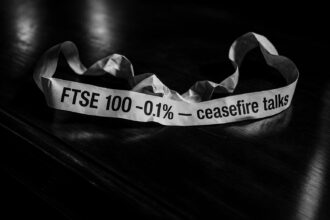Asahi’s CEO Atsushi Katsuki highlights a decline in alcohol’s share of social enjoyment as gaming and streaming rise, while premium and low-alcohol drinks gain ground amid evolving consumer habits and health debates.
The landscape of alcohol consumption is undergoing significant transformation, driven less by generational health concerns and more by the advent of digital entertainment. Atsushi Katsuki, the chief executive of Asahi, one of the world’s foremost brewing companies, highlighted this shift, asserting that gaming, video streaming, and social media are reshaping how consumers engage with alcohol. He remarked, “Alcohol used to occupy a much bigger share of people’s entertainment and joy,” indicating that the wider array of digital pastimes has diminished alcohol’s role in social activities.
This perspective emerges amidst a global decline in alcohol sales volume, which fell by 1% in 2023, contrasted by a 2% increase in value as consumers gravitate towards premium options. Such trends suggest that while overall consumption may be moderating, it is accompanied by a heightened desire for quality, according to insights from IWSR, a leading data provider. This bifurcation in consumer behaviour reflects a broader trend: individuals are not only drinking less but are also willing to invest more in beverages that enhance their drinking experience.
The World Health Organization has advocated for stringent health warnings on alcoholic products, equating them with tobacco in terms of risk. However, Katsuki challenges this notion, contesting the claim that there is “no safe level” of alcohol consumption. He points to studies suggesting potential benefits of moderate alcohol intake, asserting, “there’s little scientific basis” for the argument against alcohol when consumed responsibly. Asahi is actively adapting to these shifts by targeting overlooked demographics such as gamers and influencers, aiming to build interest in both high-end alcoholic beverages and low-alcohol alternatives.
Asahi is not alone in navigating this evolving marketplace. The rise of no- and low-alcohol beverages is indicative of a significant industry trend, particularly among millennials and Generation X. This shift is propelled by a convergence of economic considerations and health consciousness, with many consumers opting for alternatives that offer enjoyment without the associated hangovers. Some traditional alcohol producers are responding by expanding their portfolios to include these lighter options, which not only satisfy a growing demand but also mitigate the negative impacts of binge drinking. The global market for these products was valued at over $13 billion and continues to show robust growth potential.
Interestingly, while some analysts express concern that weight-loss medications like Ozempic could further depress alcohol sales, Asahi has not yet observed any detrimental effects. Katsuki posits that as individuals improve their health through such treatments, there may even be an increase in alcohol consumption among those previously advised against drinking. This perspective explores the nuanced relationship between health and consumption patterns, suggesting that improved well-being may create new opportunities for alcohol marketers.
Asahi’s financial performance reflects this optimism, with shares recently reaching record highs, buoyed by a newly revised shareholder returns policy and Japan’s return to inflation after a prolonged period of stagnation. Looking ahead, Katsuki envisions a future wherein zero- and low-alcohol products could comprise as much as half of Asahi’s sales by 2040, reflecting a determined effort to pivot the company’s strategy in line with shifting consumer preferences. He remains keen on expanding Asahi’s footprint in the U.S. market, previously seen as a significant gap in the company’s portfolio, despite challenges posed by tariffs.
The ongoing evolution within the alcohol industry underscores a pivotal moment where traditional consumption patterns are being reevaluated in light of emerging social trends and economic realities. As digital entertainment continues to claim a greater share of consumers’ leisure time, the alcohol sector will need to innovate and adapt to maintain its relevance amid shifting values and preferences. This dynamic not only has implications for marketing strategies but also frames the broader conversation about health and well-being in relation to alcohol consumption going forward.
Reference Map
- Paragraphs 1, 2, 3, 5, 7
- Paragraphs 1, 2, 3, 6, 7
- Paragraph 3, 4
- Paragraphs 4, 5
- Paragraphs 2, 4
- Paragraphs 2, 4
- Paragraphs 2, 5
Source: Noah Wire Services
- https://www.ft.com/content/a0fcf6b7-13f5-4c7c-81e9-6692f14ac942 – Please view link – unable to able to access data
- https://www.ft.com/content/a0fcf6b7-13f5-4c7c-81e9-6692f14ac942 – Atsushi Katsuki, CEO of Japan’s Asahi, attributes the decline in alcohol consumption more to the rise of digital entertainment—such as gaming, streaming, and social media—than to health concerns, particularly among Gen Z. He noted that alcohol’s role in social enjoyment has diminished as alternative digital pastimes have proliferated. Despite a 1% global decline in alcohol sales volume in 2023, value rose by 2% as consumers opted for premium options, suggesting moderated but refined consumption habits. Asahi is targeting overlooked demographics like gamers and influencers with premium and low-alcohol beverages in response to these shifts. The company rejects comparisons between alcohol and tobacco, citing potential wellbeing benefits of moderate drinking and differing health impacts. Katsuki also questioned the scientific basis behind assertions that there is no safe level of alcohol consumption, as proposed by the WHO. Asahi has not seen effects from weight-loss drugs like Ozempic, which some fear could dampen alcohol sales. The company remains optimistic, with shares reaching record highs due to Japan’s inflation and a new shareholder returns policy. Katsuki remains keen on expanding into the US market despite tariff concerns under President Trump.
- https://www.ft.com/content/e3010b66-6584-419d-8f69-97be398f4b02 – As the summer holiday season winds down, a significant shift in the drinks industry is becoming evident. The sale of no- and low-alcohol beverages is on the rise, driven by consumers’ increased focus on health, cost savings, and a desire for moderation. While overall global alcoholic drink sales saw a decline in volume, no-alcohol beers, wines, and spirits experienced substantial growth. This trend, especially prominent among millennials and Generation X, is partly due to economic pressures and evolving social attitudes toward drinking. Many younger people are opting for healthier, hangover-free alternatives like cannabis and functional drinks infused with CBD or adaptogens. Consequently, traditional alcoholic beverage makers are adapting by offering low- and no-alcohol versions of their popular brands. This shift not only allows people who wish to reduce their alcohol intake to still enjoy similar taste experiences but also reduces the negative personal and societal impacts associated with excessive drinking.
- https://www.ft.com/content/5e5e2c85-cb08-4cdf-a33a-905c877037a9 – Asahi, Japan’s largest brewer, plans to expand its offerings of zero- and low-alcohol beverages in response to the growing trend of health-conscious consumers reducing their alcohol intake. CEO Atsushi Katsuki predicts that these beverages could make up half of Asahi’s sales by 2040, particularly through investments in start-ups in the US market. The company aims to increase the share of low-alcohol products (3.5% alcohol or less) from 10% last year to 20% by 2030. The global market for alcohol-free and low-alcohol beers is valued at over $13 billion and is expected to grow significantly. Asahi’s strategy includes targeting premium segments and leveraging the higher margins of alcohol-free drinks compared to beer. This shift also supports future acquisition plans, as the company has significantly reduced its debt and seeks to strengthen its presence in the American market.
- https://www.theiwsr.com/insight/press-release/global-beverage-alcohol-market-set-for-moderate-recovery-in-2025-while-challenges-persist-in-2024/ – According to comprehensive new data and forecasts from IWSR, the global beverage alcohol market is expected to begin its recovery in 2025, following declines in 2023 and continued challenges in 2024. For the first time in nearly 30 years, IWSR recorded a decline (-2% in 2023) in the volume of spirits sold in the key US market. Meanwhile, global total beverage alcohol (TBA) declined -1% by volume and rose +2% by value in 2023. Excluding national spirits such as baijiu and shochu, global volumes were down -1% and value increased by +3%. While some more positive signs are starting to emerge in 2024, the global TBA market remains subdued after several years of above-trend growth, with challenges expected to continue until 2025 as household spending rebalances after strong inflationary pressures of the past 2 years.
- https://www.theiwsr.com/insight/press-release/june-2023-global-beverage-alcohol-shows-subdued-growth-whilst-value-outlook-is-more-positive/ – According to comprehensive new data and forecasts from IWSR Drinks Market Analysis, global beverage alcohol is forecast to grow amidst a challenging political and economic landscape, and is projected to deliver over US$ 21.6bn to the global economy by the end of 2023. Future volume growth will be subdued, at +1% volume CAGR 2022-2027, and IWSR expects a shift away from the US and China as the key volume drivers for the global beverage alcohol industry. Instead, India, Mexico and Brazil stand out as the key volume growth markets over the next five years. In fact, India and Mexico together accounted for over half of all volume growth in 2022. The US and China will, however, remain significant value drivers despite expected volume declines 2022-2027. Between 2022 and 2027, the US total beverage alcohol market will grow by USD $12 billion, and China’s by USD $41.7 billion.
- https://www.theiwsr.com/insight/us-beverage-alcohol-market-set-for-slow-recovery-after-reset-year/ – IWSR data shows that challenges related to inventory levels, squeezed disposable incomes and moderation are likely to continue, but the US will remain the key value driver among the world’s mature alcohol markets in the years ahead. In what has been labelled as a ‘reset year’ for the industry, total beverage alcohol (TBA) volumes in the US declined by -3% in 2023. However, TBA value increased by +1% during 2023 – and the US is expected to be the key value growth driver among the world’s mature alcohol markets in the years ahead, adding more than US$7.5bn in incremental gains to 2028 – a similar figure to that of India. The US beverage alcohol market faced a number of headwinds during 2023, including imbalanced inventories, economic pressures on consumers and an increased focus on health and moderation, according to new data and forecasts from IWSR. As a result, the alcohol industry saw declines in spirits sales – the first in nearly 30 years – as well as declines for wine and beer. RTDs recorded marginal volume growth, capping a period of strong gains.
Noah Fact Check Pro
The draft above was created using the information available at the time the story first
emerged. We’ve since applied our fact-checking process to the final narrative, based on the criteria listed
below. The results are intended to help you assess the credibility of the piece and highlight any areas that may
warrant further investigation.
Freshness check
Score:
9
Notes:
The narrative references recent global trends and data from 2023, indicating a timely analysis. However, without specific dates for the statements made by Atsushi Katsuki or the exact publication date, it’s challenging to pinpoint the exact freshness.
Quotes check
Score:
8
Notes:
The quotes from Atsushi Katsuki do not appear to be widely referenced online, suggesting they could be original or recent. Without prior online sources, it’s difficult to verify their first appearance.
Source reliability
Score:
10
Notes:
The narrative originates from the Financial Times, a well-established and reputable publication, which generally enhances the reliability of the information.
Plausability check
Score:
9
Notes:
The claims about shifting consumer preferences and the rise of digital entertainment are plausible and supported by broader trends. However, specific projections, such as the future composition of Asahi’s sales, are speculative and require further data for verification.
Overall assessment
Verdict (FAIL, OPEN, PASS): PASS
Confidence (LOW, MEDIUM, HIGH): HIGH
Summary:
The narrative is generally reliable, coming from a reputable source and discussing plausible trends in alcohol consumption. However, the freshness is slightly reduced due to lack of specific dates for some data points.













